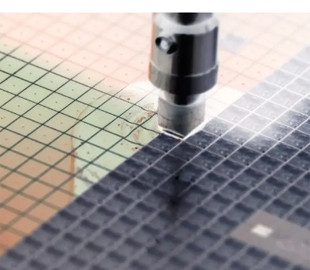
Chinese developers are intensively working on the creation of new lithography machines for the production of microcircuits, seeking to reduce dependence on foreign technologies, against the background of trade restrictions from the United States. Although the new Chinese installations show technological progress, they are still behind the global industry leaders.
The new Chinese lithography machines belong to the deep ultraviolet (DUV) class of machines and use argon fluoride lasers. One of the machines provides a resolution of less than 65 nm and a deposition accuracy of 8 nm, while the other operates at a wavelength of 248 nm with a resolution of 110 nm and a deposition accuracy of 25 nm. Despite these achievements, Chinese developments cannot yet compete with technologies from world leaders such as ASML and Nikon, whose products have much higher technical indicators.
To date, the best Chinese lithography machine is the SSX600 from Shanghai Microelectronics Equipment (SMEE), which can produce chips on a 90nm process. One of the new DUV machines is more progressive than the SSX600, and the other — worse For comparison, ASML's least advanced DUV machine has a resolution of 38 nm and an overlay accuracy of 1.3 nm, which significantly exceeds the capabilities of Chinese counterparts.
200% Deposit Bonus up to €3,000 180% First Deposit Bonus up to $20,000The new Chinese systems are not yet ready for mass production, and their developers remain unknown. However, China continues to strive for technological sovereignty, especially in the face of escalating trade tensions with the US, which has led to the introduction of strict restrictions on the export of semiconductor technology. Dutch company ASML, one of the leading suppliers of lithography machines, must now obtain export licenses to sell its advanced systems to China, making it much more difficult for Chinese manufacturers to access these technologies.
SMEE, a state-owned company that is China's main a player in the field of lithographic technologies, continues to lag behind competitors. In 2022, SMEE demonstrated a lithographer capable of producing chips using 28nm technology, but mass production of this equipment has not yet been established. In addition, in March 2023, SMEE filed a patent for extreme ultraviolet lithography (EUV) technology, which shows some developments in the development of China's lithography industry even in the face of sanctions and restrictions.
Technological race in chip manufacturing continues to intensify , and China, despite significant difficulties, is actively looking for ways to develop its own semiconductor industry. Despite lagging behind world leaders, Chinese research and development can become the basis for further technological progress.

